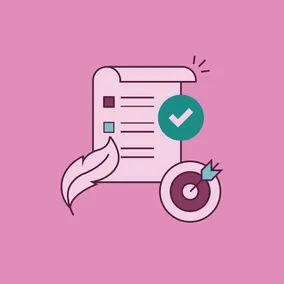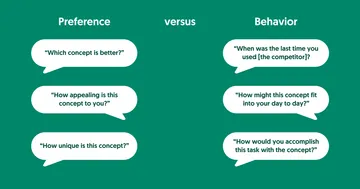The Keys to Successful Concept Testing: Planning

You and your team have new ideas, but will they resonate with your users? Concept testing is key to finding out, but there are a few things to know before you start.
Concept testing is a research method that explores how a user perceives or interacts with a new idea. It usually takes place early in a project, and involves putting ideas into the “real world” to see how users will react to them.
Not every project needs to include concept testing, but it can make your solutions more user-centered. Involving users in the design process leads to products, sites, and experiences that are more aligned with user wants and needs — and ultimately more successful.
Concept testing is most useful when exploring ideas that are novel, complex, or risky. It can also help your team:
- Generate more purposeful, user-centered ideas.
- Identify which ideas provide the greatest value to users.
- Prioritize the most promising idea(s), saving time and money.
- Evaluate any significant changes you make along the way.
I’ll cover how we use concept testing at Viget to help our clients gain clarity and develop user-centered solutions.
This article will be part of a three-part series focused on concept testing. First, we’ll focus on planning out your concept testing.
Form a clear plan
A successful concept test has a well-defined plan at its foundation from the start. At Viget, we work with clients to define what you want to learn, and who you want to learn from.
Let’s imagine that you and your team are redesigning an online food delivery platform, and you have some new concepts that you want to test to see if they resonate with users.
Focus on what you want to learn.
Start by defining research objectives. Think of these objectives as your north stars that will guide you and your team. You’ll use these for initial alignment, and then to frame what the prototype needs to do, and what feedback you really need.
You can create a strong set of objectives by asking:
- What initially sparked the motivation to test?
- Where do you have the most uncertainty about your concept?
- What are the key things you need to know through testing?

Teams usually have a lot of questions, and feel pressure to answer all of them at once. Resist the pressure! Instead, focus on the most pressing and critical — it will allow you to dive deeper into the most important areas in a session. Otherwise, you may not have the depth you need to move forward when you finish the testing.
Let’s say you've developed new solutions that span the whole user journey of online food delivery. You could spend a whole research session asking questions that cover all that breadth, but you would get much more depth by focusing on one particular moment in the journey, like the online ordering experience.
Think about who you want to talk to (and be holistic).
If you aren’t intentional about who you test with, you can end up with feedback that may not be applicable. Ideally, you’re talking to existing customers or people who would use the website or product in the future. Look at behaviors, like whether they’ve used a competitor, or hold specific sentiments, when recruiting participants. Perhaps you’re trying to expand your audience for your new food delivery app, so you may want to talk to people who cook at home frequently as well.
Don’t forget to think holistically. Consider every person who might interact with this solution, from beginning to end, and who might be affected by it. For your new app, you'll want to test with the diner, but your solutions may also affect the restaurant host/hostess, cooks and cashier’s workflows for example. So you may need to capture their perspectives.
Opinions aren’t strong evidence.
You may gravitate towards seeking preferences or opinions about your concepts (i.e., “which concept is better?”). But rather than focusing on which concept users like most, it’s more important to uncover user behavior. Preference-centric concept testing won’t teach you about how someone might actually interact with this concept.
For instance, you’ll learn much more about which new concepts for online food ordering are most beneficial to users if you ask about how they might use it in a scenario. Or even better, you actually have them interact with each one.
Questions like the ones below will give you stronger indications of user behavior:
- When was the last time you used [the competitor]?
- How might this concept fit into your day to day?
- How would you accomplish this task with the concept?

Avoid asking questions like “Which concept is better?” or “which one do you prefer?” Instead ask why one concept has advantages or disadvantages over another for a user, or how they actually envision it in their daily life.
Even if the focus of the test is on preference (as is the case for branding or marketing research) it’s still helpful to dive deeper into what a user feels the design is communicating to them and why that prompts a specific reaction.
These key strategies that I’ve covered should get you a jump-start for successfully planning out your first concept test.
In the next article in the series, I'll dive into prototyping.
